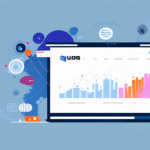Understanding UDS and Its Role with SAP Business One
To effectively connect, optimize, and manage Universal Data Source (UDS) for SAP Business One, it is crucial to first comprehend what UDS is and how it integrates with SAP systems. UDS serves as a middleware solution that facilitates seamless access to data across diverse platforms, ensuring that businesses can consolidate information into a unified, manageable format.
What is UDS?
UDS stands for Universal Data Source. It acts as an intermediary, allowing different systems and databases to communicate effortlessly. By consolidating data from various sources, UDS provides businesses with a centralized platform for data analysis and decision-making.
Key Benefits of UDS Integration
- Simplified Data Integration: UDS handles the technical complexities of connecting disparate systems, enabling businesses to focus on data analysis rather than integration challenges.
- Enhanced Data Security: Utilizing advanced encryption and authentication methods, UDS ensures that data remains protected from unauthorized access.
- Real-Time Data Access: Businesses can access and analyze data in real-time, leading to more informed and timely decision-making.
Connecting UDS with SAP Business One
Integrating UDS with SAP Business One can significantly enhance your ERP capabilities. Here’s a comprehensive guide to help you through the process:
Step-by-Step Integration Guide
- Choose the Right UDS Version: Ensure compatibility with your current version of SAP Business One.
- Download and Install UDS: Obtain the appropriate UDS software from the official website and follow the installation instructions.
- Configure UDS: Set up UDS to communicate with your SAP Business One system, following the configuration guidelines provided in the documentation.
- Map Data Sources: Align data fields from external sources to SAP Business One tables to ensure accurate data transfer.
- Test the Integration: Conduct thorough testing to verify that the integration functions correctly and data flows seamlessly.
Best Practices for Integration
- Ensure Data Quality: Implement data governance policies to maintain consistent and accurate data across all systems.
- Regularly Update Software: Keep both UDS and SAP Business One updated to the latest versions to benefit from improved features and security patches.
- Monitor Performance: Use monitoring tools to track the performance of the integration and address any issues promptly.
Optimizing and Managing UDS Integration
Once UDS is connected to SAP Business One, ongoing optimization and management are essential to maintain efficiency and data integrity.
Benefits of Optimization
- Reduced Data Latency: Minimizes delays in data transfer, ensuring that information is up-to-date across all platforms.
- Improved Data Accuracy: Helps in identifying and rectifying data inconsistencies, enhancing the reliability of your data.
- Elimination of Data Silos: Promotes a unified data environment, facilitating better collaboration and information sharing.
Management Strategies
Effective management involves regular monitoring, maintenance, and updates:
- Automated Monitoring: Utilize tools that provide real-time insights into data flows and system performance.
- Data Analytics: Regularly analyze data to identify trends, potential issues, and areas for improvement.
- Stay Updated: Keep abreast of the latest updates from SAP to ensure your integration leverages new features and maintains compatibility.
Enhancing Efficiency with UDS and SAP Business One
Integrating UDS with SAP Business One can lead to significant improvements in business operations:
Real-Time Data Synchronization
With real-time synchronization, any changes made in one system are immediately reflected across all connected applications. This reduces the need for manual data entry and minimizes the risk of errors.
Streamlined Business Processes
Automating workflows through UDS integration allows businesses to focus on core activities rather than managing data flows. This leads to increased productivity and cost savings.
Enhanced Decision-Making
Access to real-time, accurate data empowers businesses to make informed decisions quickly. According to a Gartner report, companies that leverage integrated data solutions see a 25% improvement in decision-making speed.
Ensuring Data Quality and Security
Data quality and security are paramount in any data integration effort. Here's how to maintain high standards:
Data Quality Management
- Data Governance: Establish clear policies for data management, including data standards and ownership.
- Validation Rules: Implement rules to ensure data is accurate and consistent before it is integrated into SAP Business One.
Security Measures
- Encryption: Protect data in transit and at rest using robust encryption protocols.
- Access Controls: Implement role-based access to ensure that only authorized personnel can access sensitive data.
- Regular Backups: Maintain regular backups to prevent data loss in case of system failures or breaches.
Future-Proofing Your Business with UDS and SAP Business One
Integrating UDS with SAP Business One not only addresses current data management needs but also prepares your business for future growth and technological advancements.
Scalability
As your business expands, UDS can scale to handle increased data volumes and more complex integrations, ensuring that your ERP system remains robust and efficient.
Adaptability
With ongoing updates and support, UDS ensures that your integration adapts to new business requirements and technological changes, maintaining compatibility with emerging systems and applications.
Continuous Improvement
By regularly reviewing and optimizing your UDS integration, you can continuously enhance your business processes and data management strategies, staying ahead of the competition.
Conclusion
Integrating UDS with SAP Business One offers a multitude of benefits, from streamlined data management and enhanced security to improved decision-making and scalability. By following best practices for connection, optimization, and management, businesses can unlock the full potential of their ERP systems, ensuring efficient operations and preparing for future growth. Embrace UDS integration to future-proof your business and maintain a competitive edge in today's data-driven landscape.




















